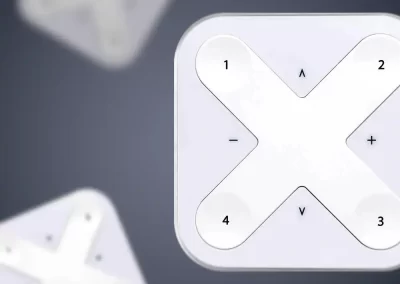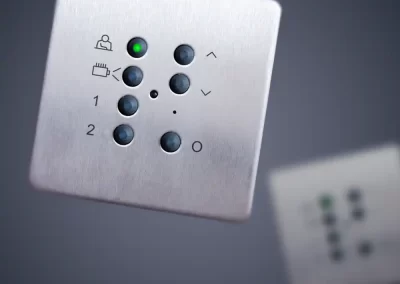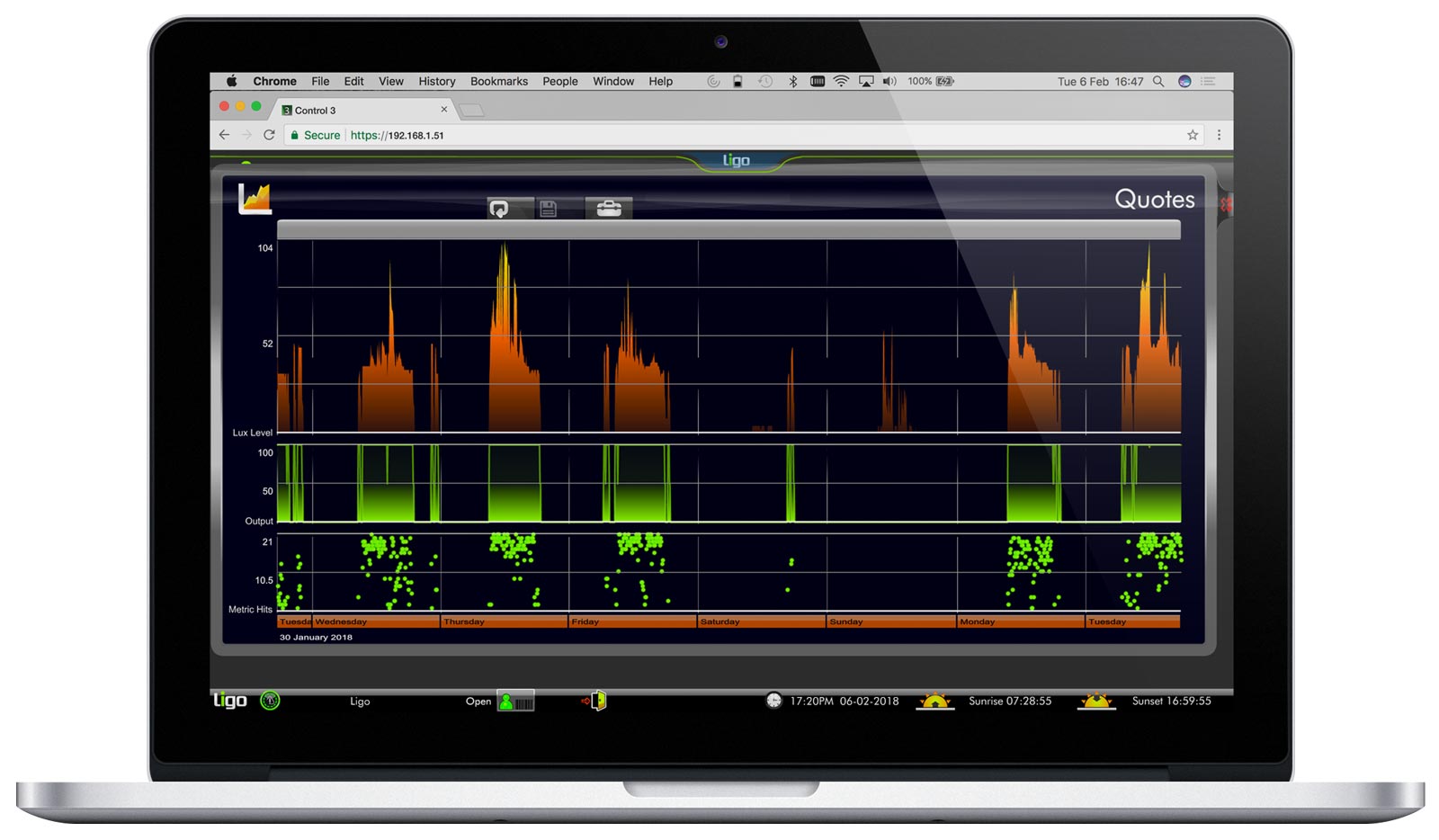Our Systems

Class Control Wireless

Class Control

Control3
Smart Lighting

Our range of Smart lighting control systems not only save energy, but report on system health, test emergency lighting and enable advanced features such as Circadian Human Centric Lighting which actively promotes wellbeing.
Energy Saving
Comfort & Wellbeing
Maintenance and BMS
Our Systems
Energy Saving Features
Comfort and Wellbeing
Fault Monitoring and Lifetime Logging
DALI luminaires are able to report back faults with Lamps and LEDs. If a light fitting fails entirely it will dissapear from the system and will raise a fault.
The fault log is a rolling 512 entry list with dates of when the fault is raised and when it is cleared. Where the system is connected to a BMS, alarms can be raised when a fault is detected. If the system is connected to a mail server it can generate an emailed fault report either as soon as the fault is detected or as a scheduled round up of recent faults.
The system maintains a record of the run-time of each light fittings allowing pro-active maintenance as products near end of life.
System Maintenance and BMS integration
Presence Detection
Auto on, Auto off
Motion sensors are used by the system to determine if the area is occupied. When the area is occupied the lights are switched on automatically. Once the area is vacated the lights are switched off again to save energy.
The time on period can be altered to suit the type of area.
A variety of motion detection technologies are used, including passive infra red (PIR) and microwave. The sensor technology and range is chosen to suit the size and type of area being controlled.
Presence detection removes the need for wall switches and their additional wiring and installation costs.
- Typical Energy Saving* 20%
*Energy saving seen by RIDI UK when used in isolation of other control strategies, total energy saving will be less than the sum of the individual savings from each strategy.
Absence Detection
Manual on, Auto off
Similar to presence detection, motion sensors are used by the system to determine if the area is occupied. In constrast to presence detection, however, the system requires the occupier to bring the lights on by pressing a switch or scene plate, in this way the lights are only on if the occupier really wants them. Once the area is vacated the lights are switched off automatically to save energy.
The time on period can be altered to suit the type of area.
A variety of motion detection technologies are used, including passive infra red (PIR) and microwave. The sensor technology and range is chosen to suit the size and type of area being controlled.
Absence detection requires a wall switch or scene plate to activate the lights, however extra energy saving can be achieved by only having the lights on when required by the occupier.
- Typical Energy Saving* 30%
*Energy saving seen by RIDI UK when used in isolation of other control strategies, total energy saving will be less than the sum of the individual savings from each strategy.
Daylight Harvesting
Reducing light output
The system uses a combination of light sensors and dimmable light fittings to reduce energy usage. When there is natural daylight available in an area, the light fittings are dimmed so that the system ‘tops up’ the available light to maintain the required levels.
When fittings are dimmed, they use less energy than when they are at full brightness.
A variety of light level sensors are used, from roof mounted, ceiling mounted and integrated. The most effective strategy and sensor type will be chosen based on the area space, usage, available natural light and geometry.
- Typical Energy Saving 40%
*Energy saving seen by RIDI UK when used in isolation of other control strategies, total energy saving will be less than the sum of the individual savings from each strategy.
Maintenance Factor Compensation
Reduce initially installed brightness
When a lighting scheme is calculated, a maintenance factor – typically 20% for offices – is included. This allows for the fact that over time light fittings get older, dusty and so their light output decreases. The maintenance factor means that when this occurs the light level achieved by the lighting is still sufficient to meet the designed levels.
As a consequence, at install time, the lighting level is too high to allow for the future degredation of the fittings. Maintenence factor compensation dims the lights at the start of their life to meet the designed levels and saves energy as a result. As time goes on the fittings are gradually inscreased so they continue to meet the designed levels.
- Typical Energy Saving 10%
*Energy saving seen by RIDI UK when used in isolation of other control strategies, total energy saving will be less than the sum of the individual savings from each strategy.
Time Based Controls
Vary the function throughout the day
Simple functions such as globally switching off all lights in at night are possible, but more frequently the time functions are used to change the behaviour of the system at different periods of the day. For example a corridor may be lit to normal levels during the day, but at night to allow for security walk rounds, it would be lit to a lower level to save energy and improve comfort for security staff.
Energy Monitoring and Logging
Record the usage of each area
By recording the output of every light fitting over time, the system is able to calculate and display how much energy is being used at any point during the day. Studies show that providing access to this information causes building user behaviour to change in order to reduce their energy usage.
The system can calculate energy usage from the luminare wattage and output stored within the system database. For billing purposes the system can be integrated with circuit level energy meters.
Scenes
Scenes are combinations of brightness and colour that are used to change the mood or utility of an area. Scenes can be recalled at the push of a button, a scene plate, AV panel, time clock or other method.
Each individual light fitting can have a different output in a scene to allow the creation of exactly the right levels throughout the room for the intended use or mood.
An example would be an interactive whiteboard mode within a classroom where lights near the projector screen are dimmed to prevent washing out the display while the remaining lights are set to a level that allows the students to continue to make notes.
It is well worth discussing your scene requirements with us early on to ensure the best possible setup for each area.
Circadian and Tuneable White
The human body has evolved to expect a gradually changing colour and intensity of light from the sun as it moves through the sky from dawn to dusk. Initally soft and warm (reddish) through to intense and cool (blueish) at midday and back to soft and warm.
The gradually changing light and specifically its blue light component help the body sync the internal body clock, providing peak performance during the day and sound sleep at night.
Lack of access to naturally occuring daylight, due to spending most of our working day indoors, is implicated in numerous physiological problems.
Circadian lighting aims to simulate the natural daylight cycle using tuneable white lights with the capability to vary their white colour from warm to cool.
For more information see our well lighting section
AV Integration
Using volt free contacts or TCP/IP messaging over ethernet, AMX, Crestron and similar AV control systems can recall preset scenes in the lighting system making setup of a presentation or similar a single button affair.
Smart Circulation
We put a ‘bubble’ of light around people as they navigate the building, ensuring that the minimum number of areas are lit to ensure that you never have to enter a dark corridor.
The same system can be used to provide notional corridor zones and pools of light around working zones in open plan offices to comply with BS EN12464-1:2011

Fault Monitoring and Lifetime Logging
DALI luminaires are able to report back faults with Lamps and LEDs. If a light fitting fails entirely it will dissapear from the system and will raise a fault.
The fault log is a rolling 512 entry list with dates of when the fault is raised and when it is cleared. Where the system is connected to a BMS, alarms can be raised when a fault is detected. If the system is connected to a mail server it can generate an emailed fault report either as soon as the fault is detected or as a scheduled round up of recent faults.
The system maintains a record of the run-time of each light fittings allowing pro-active maintenance as products near end of life.
Emergency testing
Fittings with integrated emergency backup batteries can be tested and reported on over the DALI network with no additional control wiring.
The system is setup to run scheduled function and duration tests on the emergency lights to meet the site requirements.
Reports are held within the Control3 processor in non-volatile memory and can be viewed using any web browser. Systems that are connected to a mail server can email the emergency test reports on a scheduled basis.
Central battery emergency testing
When used in conjunction with out Performance Central Battery system, standard DALI light fittings can be assigned as emergency fittings and tested on a routine basis. While power is supplied by the central battery test system, Control3 monitors the status of designated fittings and records a pass/fail status in the test results along with pertinant information about the nature of any failures.
Additionally data from the central battery is recorded on the test results giving useful battery health information as the end of each test.
Reports are held within the Control3 processor in non-volatile memory and can be viewed using any web browser. Systems that are connected to a mail server can email the emergency test reports on a scheduled basis.
Trend / BACNet BMS Integration
Control3 optionally allows bi-directional communication to Trend and BACNet systems. Each group of lights, appears an outstation to the BMS, the following points are available for each group.
Sensors
Read Only Value
- Average Ballast Level
- Lux Level
- Lux Setpoint
- Button State
- No. Failures
Inputs
Digital read only status
- PIR State
- Partition Status
- Common Fault
- Lamps Energised
- Em Function Test Requested
- EM Function Test Failed
- EM Duration Test Requested
- EM Duration Test Failed
- I/O PIR State
- I/O Partition State
Knobs
Adjustable Levels
- Lux Setpoint
- Min Level
- Max Level
- Current Scene
- Time Period
- Manual Level
- Auto/Hand/Off
- PIR On Time
- PIR Min Timer
- PIR Exit Timer
Occupancy Monitoring and Logging
Control3 monitors movement via the DALI multisensors in a room. The number of triggers per minute is recorded and can be displayed as a graph over time for each area. Higher rates of triggers correspond to more heavily occupied areas.
The occupancy rate is recorded for a room is recorded even if the lights are not switched on automatically (absence detection)

